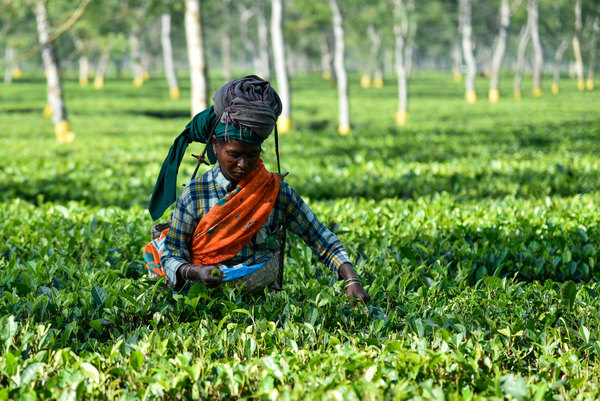Invasive species, climate change and tourism impacts the greatest threats to natural World Heritage
A new report from the IUCN looks at conservation prospects, threats, protection and management of natural World Heritage sites. The IUCN World Heritage Outlook 2 summarises the key trends in the state of conservation of natural World Heritage sites, the threats and pressures they are facing, and the effectiveness of their protection and management. The…
Clear water ahead
Last month the International Institute for Sustainable Development (IISD) reported that an international measure that aims to prevent the spread of invasive aquatic species had come into force (see the full article on the IISD website). The International Maritime Organization’s (IMO) International Convention for the Control and Management of Ships’ Ballast Water and Sediments (BWM…
CABI Books on Livestock Breeds and Breeding Are Essential Resource for Education, Research and Policy Influencing
This article focuses on the following three books 1. “Mason's World Encyclopedia of Livestock Breeds and Breeding: 2 volume pack”, edited by V Porter, L Alderson, S Hall, D P Sponenberg, March 2016, Hardback, 9781845934668. Volume 1: Asses, camelids, cattle, goats, horses and pigs, Volume 2: Sheep, water buffalo, yak and other livestock 2. “Mason's World Dictionary of Livestock Breeds, Types and Varieties,” published in August 2002; DOI: 10.1046/j.1439-0388.2002.00353. 3. “A World Dictionary of Livestock Breeds, Types and Varieties” by Ian Lauder Mason, 1996 (ISBN 0851991024) [previous editions: 1988, 1969 1957 (reissued with Supplement), first published in 1951) In March 2016, CABI published “Mason's World Encyclopedia of Livestock Breeds and Breeding”, which was written by co-authors (Porter, Hall and Sponenberg). This is a major international and much expanded reference book based on Ian Mason's original book, which includes breeds of domestic livestock. This version covers conservation of animal genetic resources,…
World Environment Day 2017 – “Connecting People to Nature”
First held in 1974, World Environment Day (WED) is considered to be the largest global event for positive environmental action, with participation from over 143 countries. It takes place on 5th June each year and is a flagship campaign for driving change and raising awareness on emerging environmental issues, from climate change and wildlife crime, to resource consumption and marine pollution. This year's host country is Canada and the chosen theme is 'Connecting People to…
Rainforest biodiversity – provider of services and hope against climate change
Multiple climate records were broken in 2016, according to a report published by the World Meteorological Organization this morning. Hearing about record high global temperature, exceptionally low sea ice, and persistent sea level rise was admittedly not the best start for celebrating the fifth International Day of Forests. Yet we need to be reminded…
Extension staff knowledge enhanced on ISFM practices and innovative fertilizer use
The increasing negative impact of climate change on agricultural production has led to food insecurity in many rural communities in sub-Saharan Africa. Unpredictable rainfall patterns coupled with wide spread pest and disease infestation and high input prices are some limitations smallholder farmers face in producing food. As a result, they are unable to produce at…
Plant clinic established in Cambodia – Climate-Smart Village to address crop pests
A CABI representative presents on how future plant health clinics will be conducted. Farmers can bring plant samples to the plant clinic when requesting for advice on addressing their crop problems. Photo: F. Emdin (WorldFish) The 22nd Session of the Conference of the Parties (COP) to the United Nations Framework Convention on Climate Change (UNFCC) took place…
One Health: free online course from FutureLearn features CABI authors
One Health is about connectedness: "the collaborative efforts of multiple disciplines working locally, nationally, and globally to attain optimal health for people, animals, plants and our environment”. On One Health Day, November 3rd 2016, CABI's editors held a One Health (#OneHealth) Blogathon to focus attention, contributing a total of 6 blogs to Handpicked… and Carefully Sorted, each…


